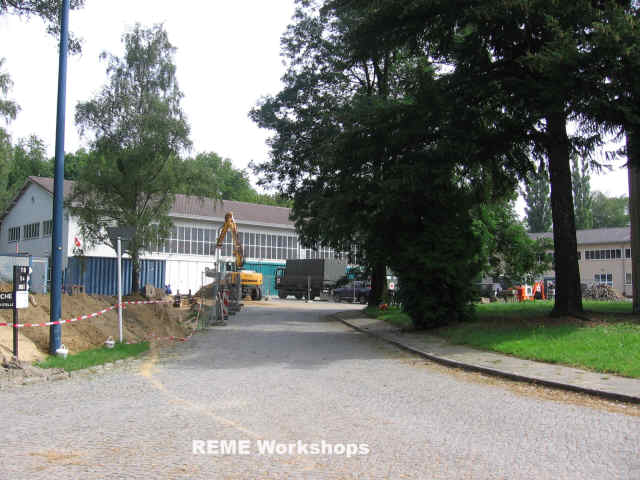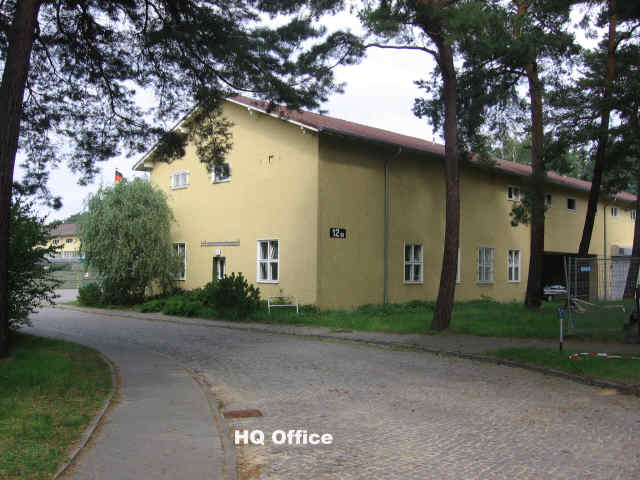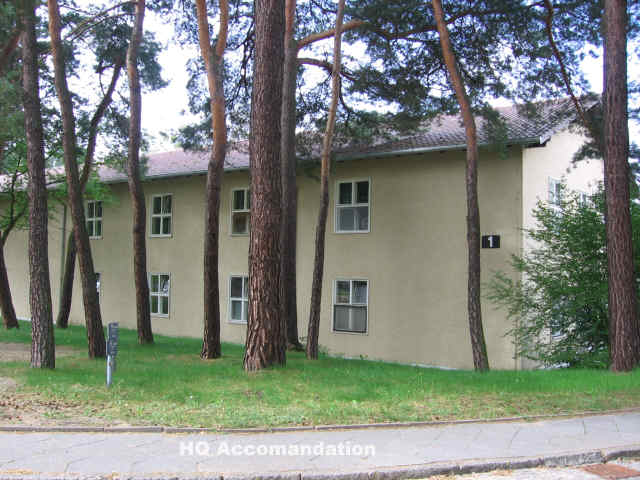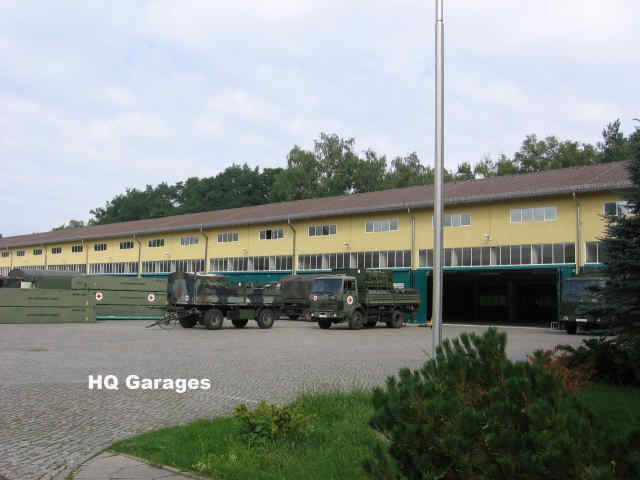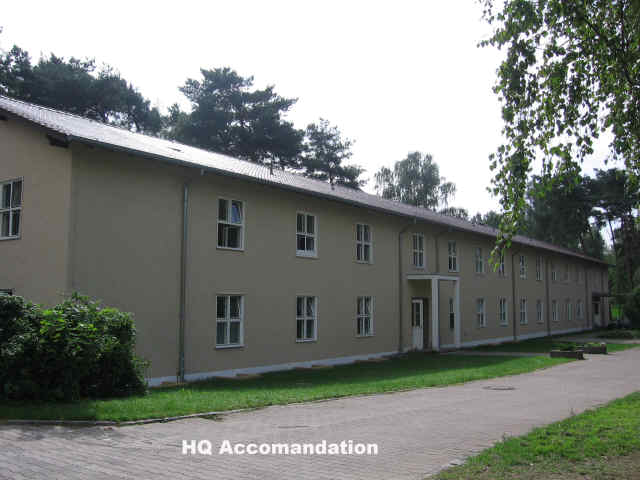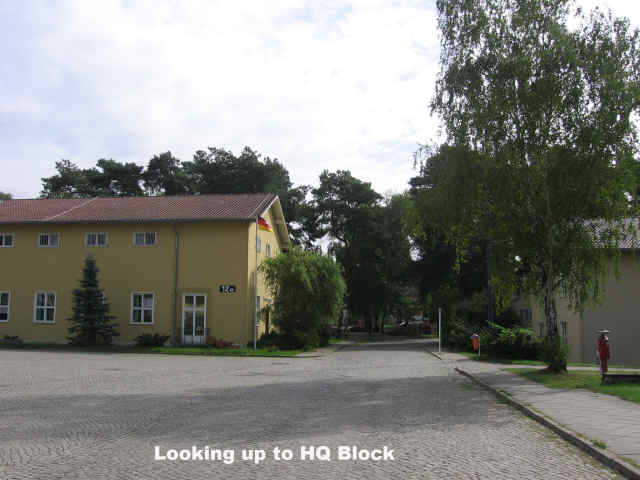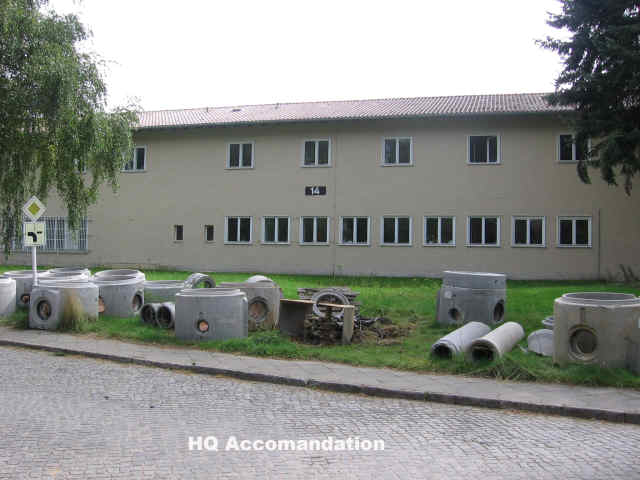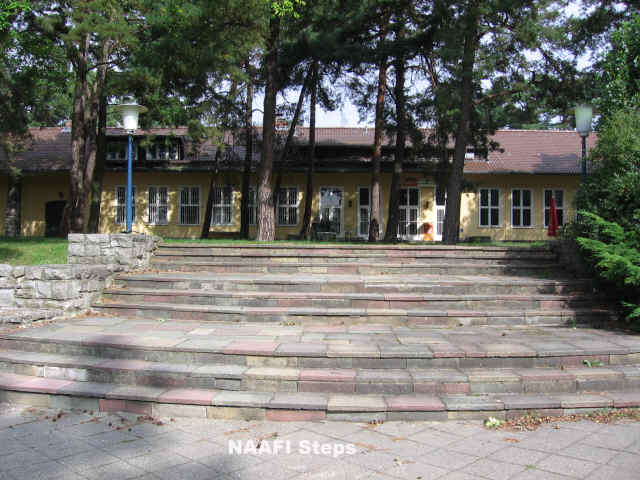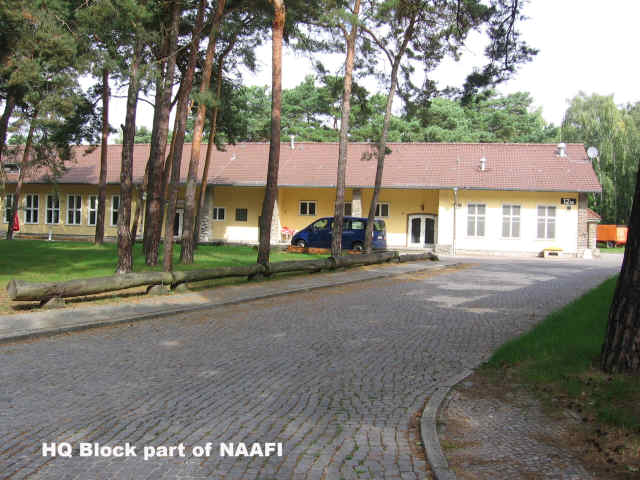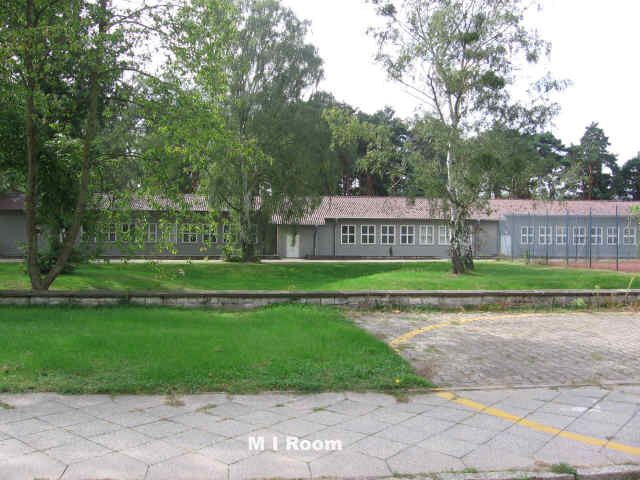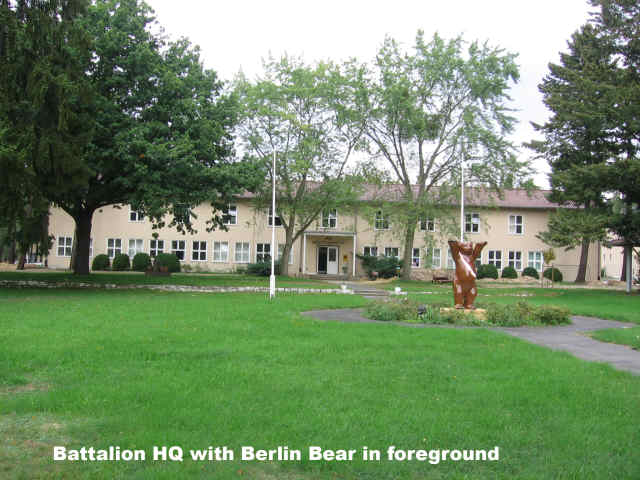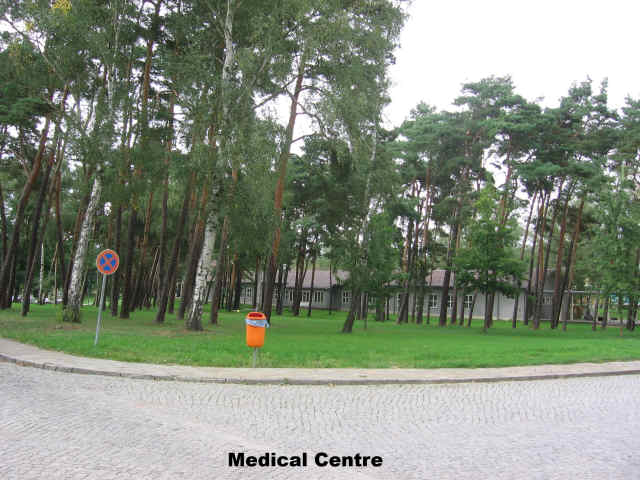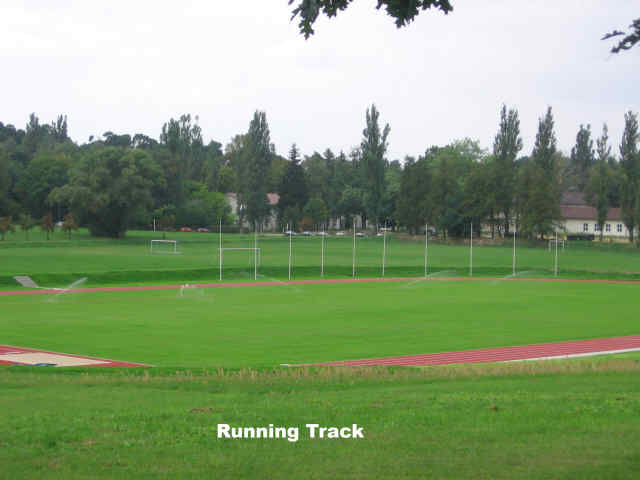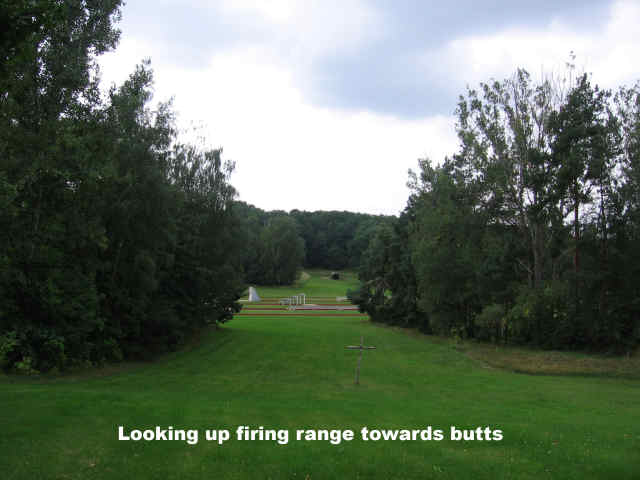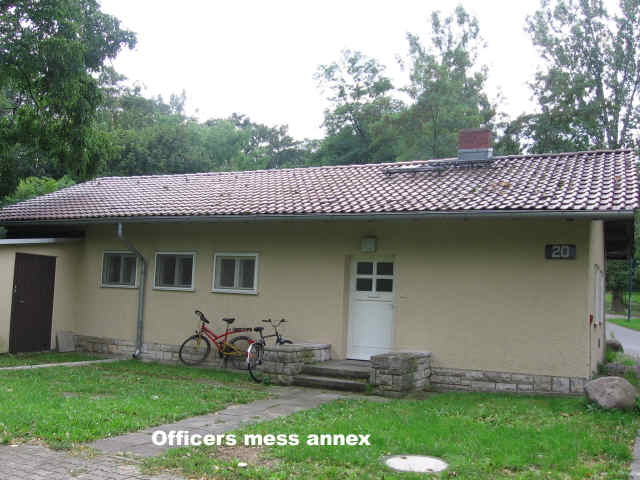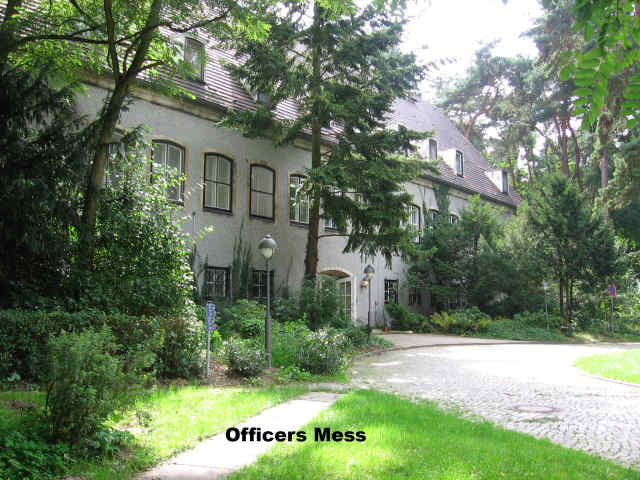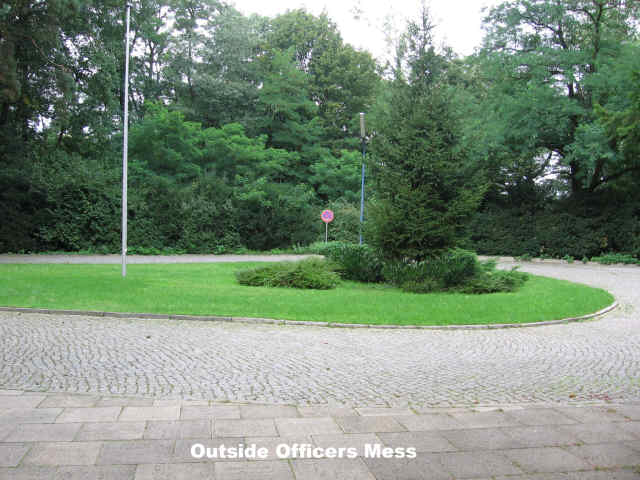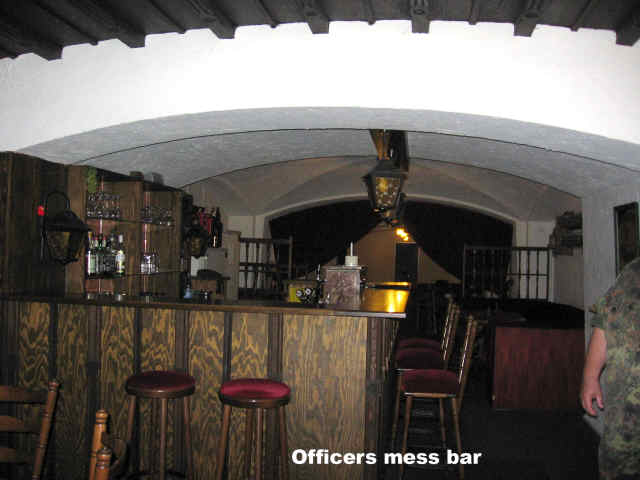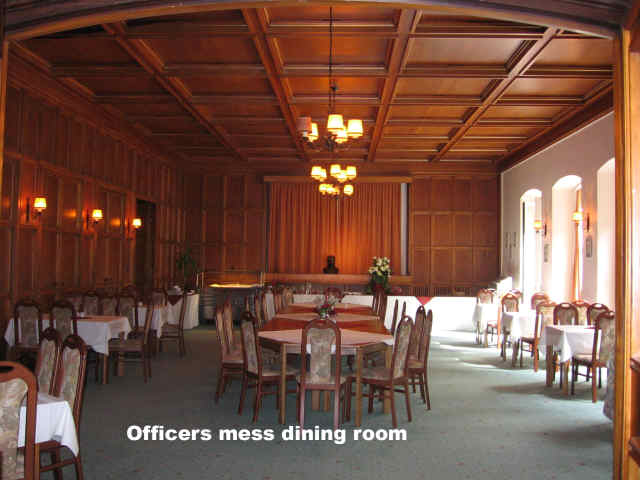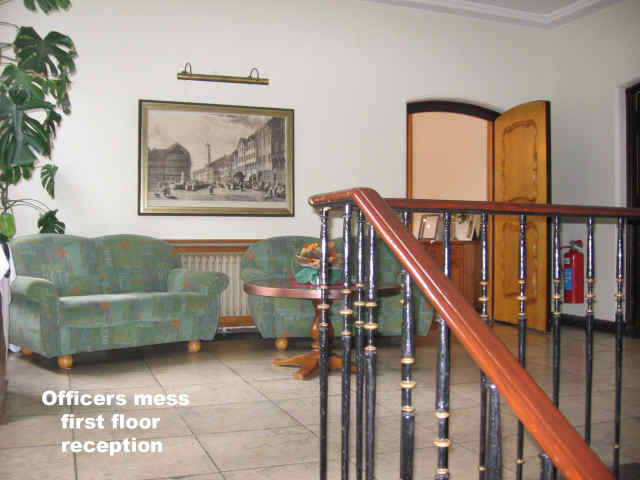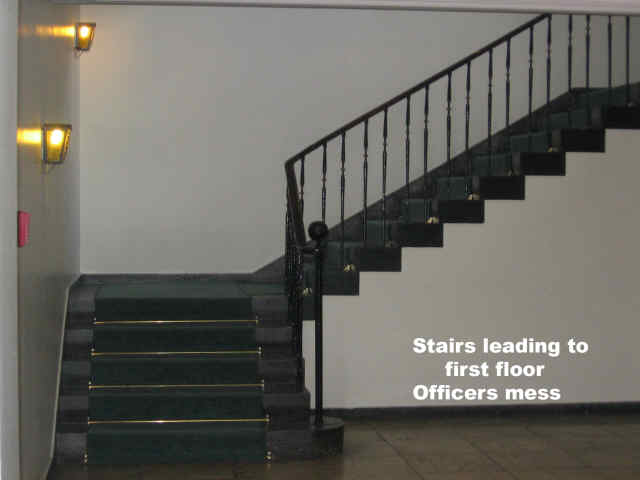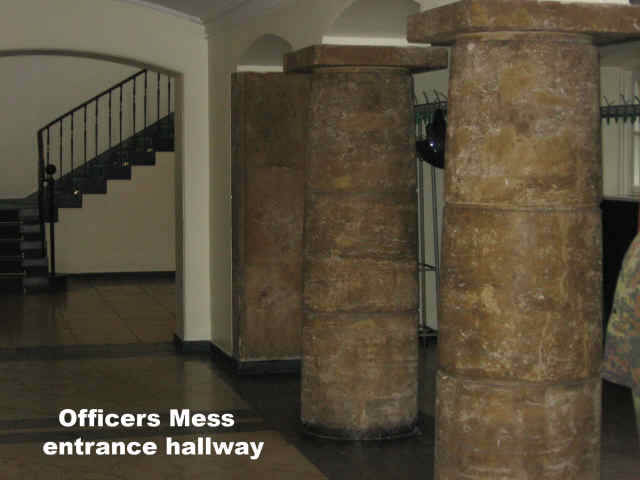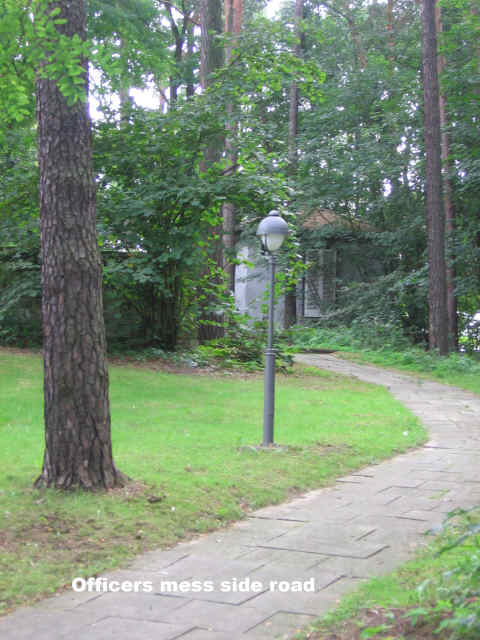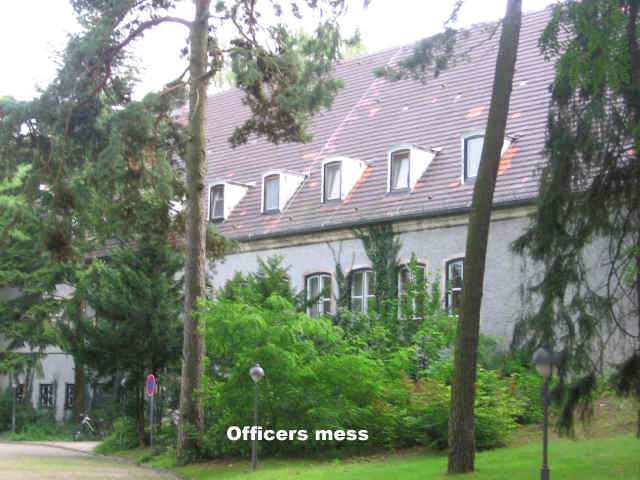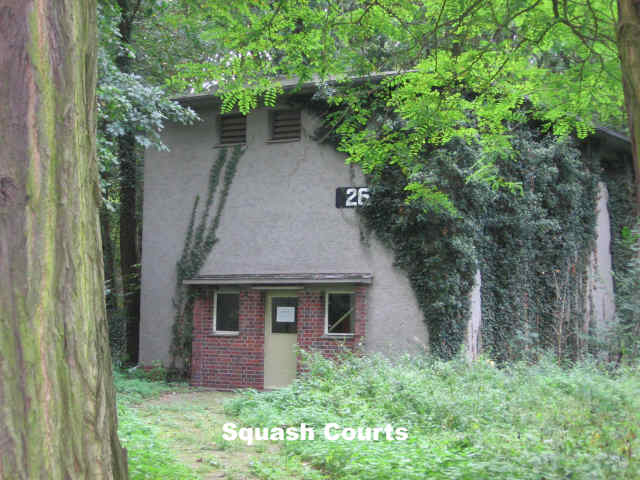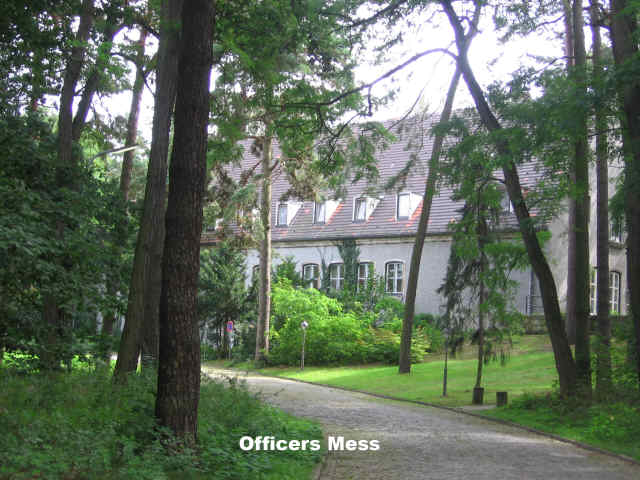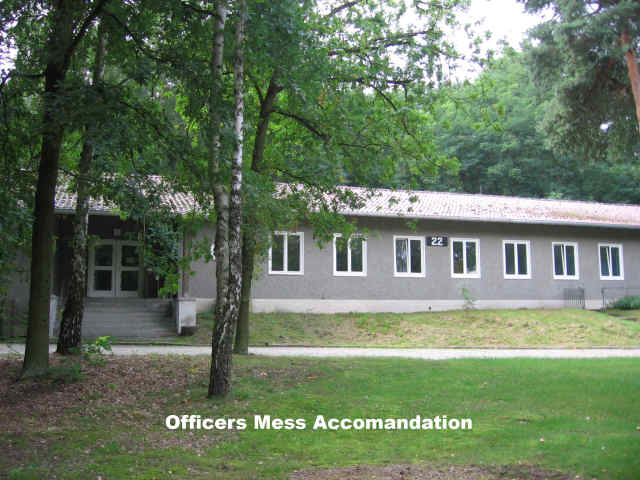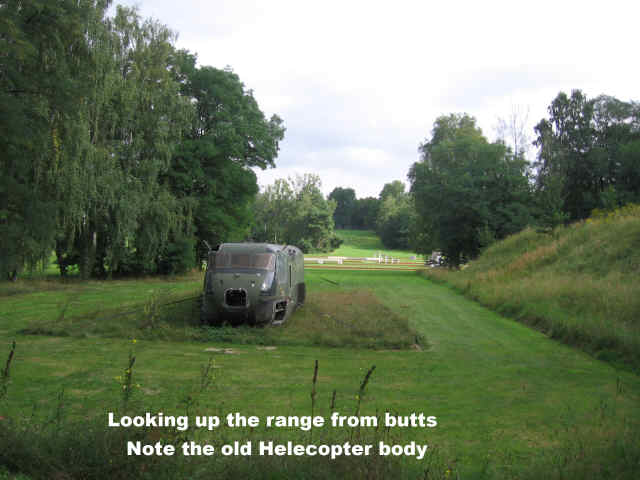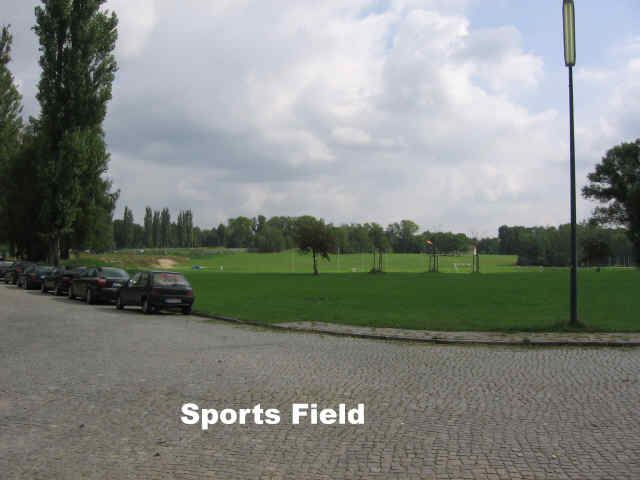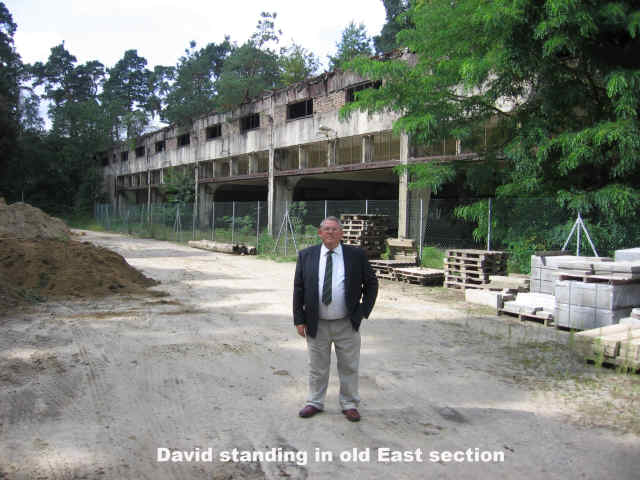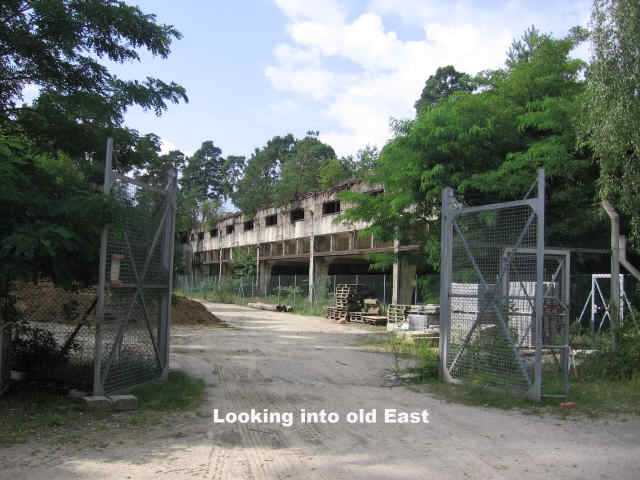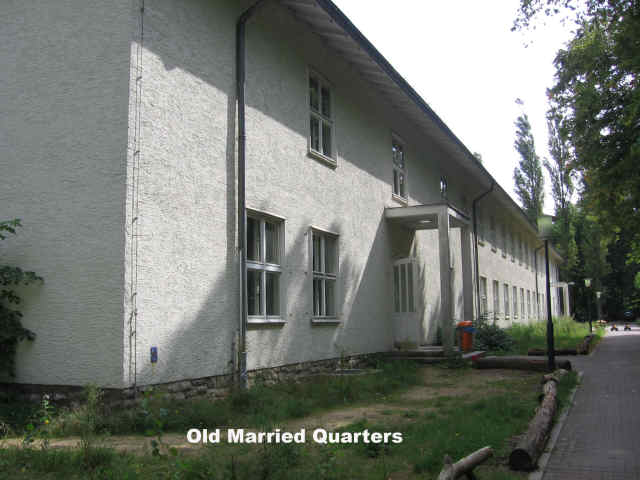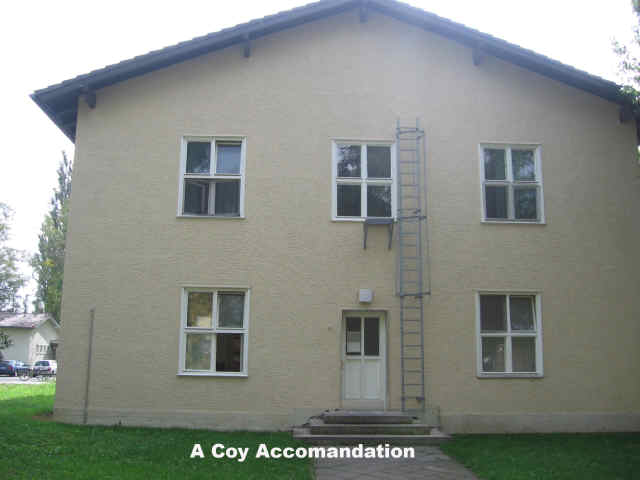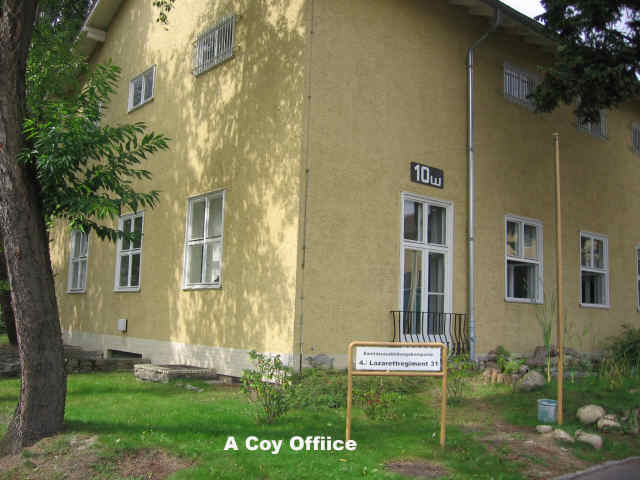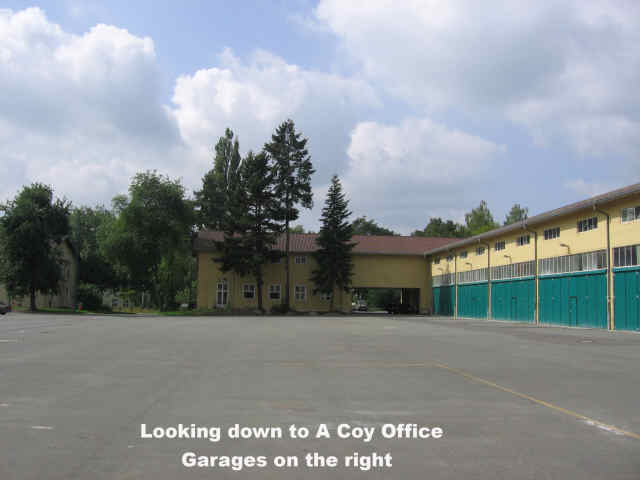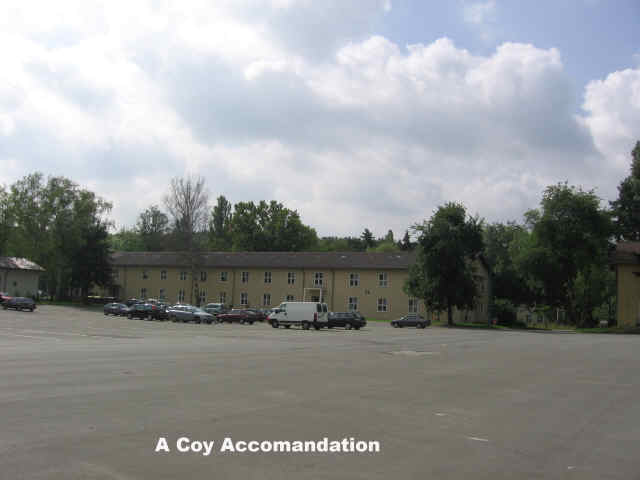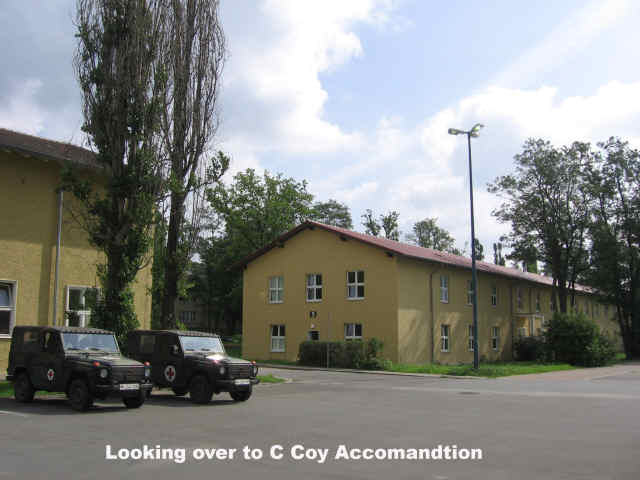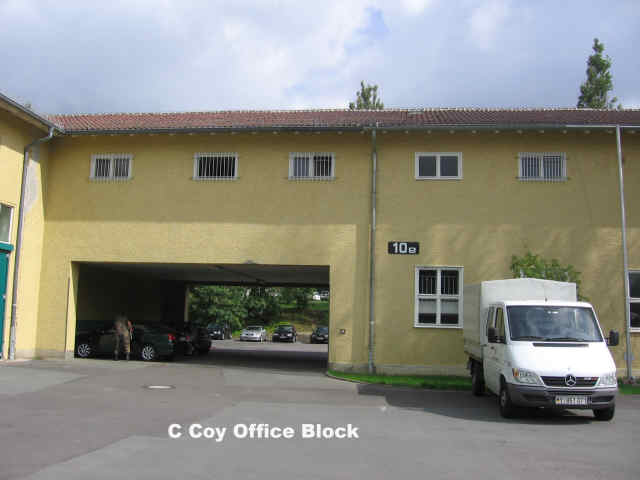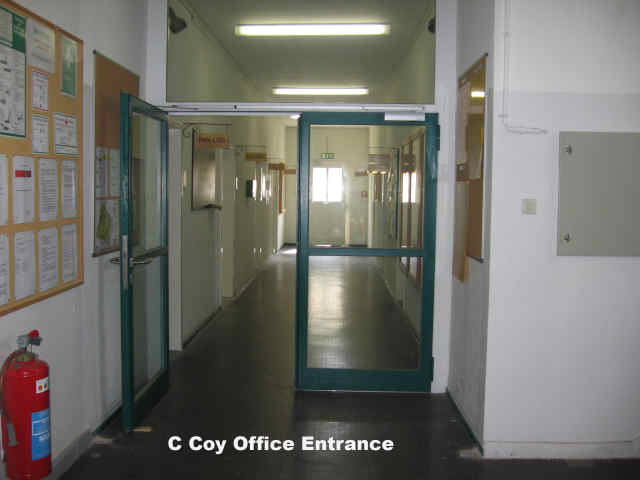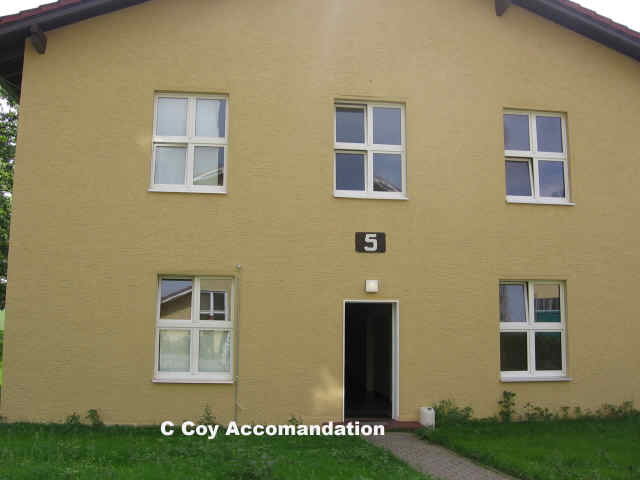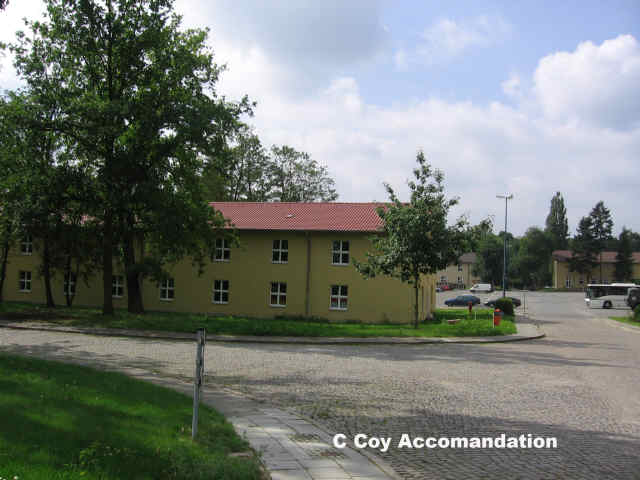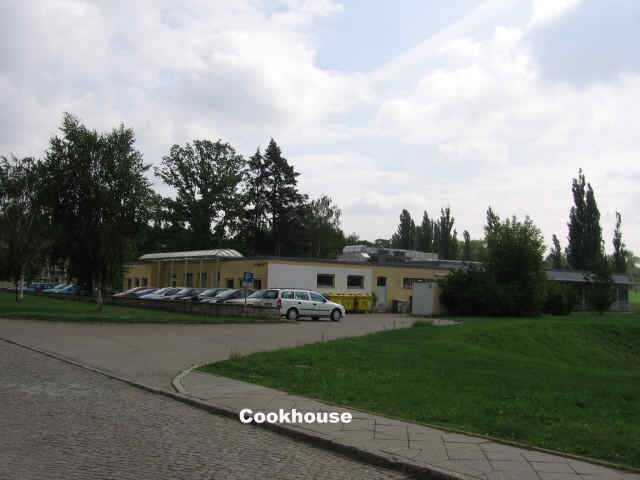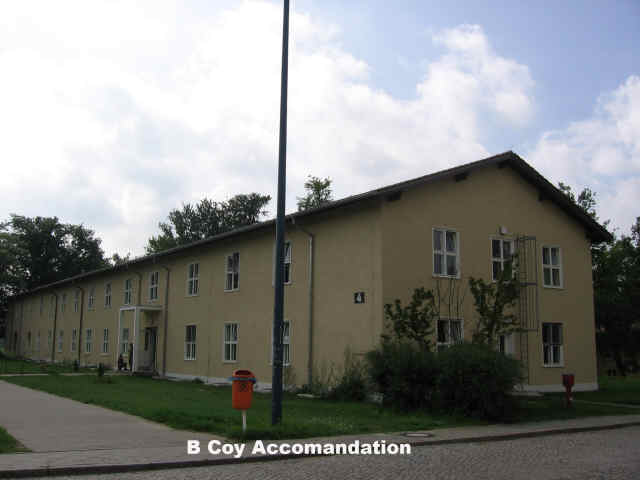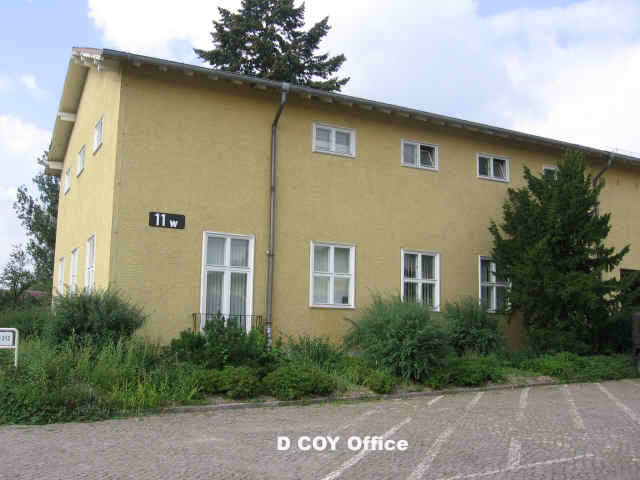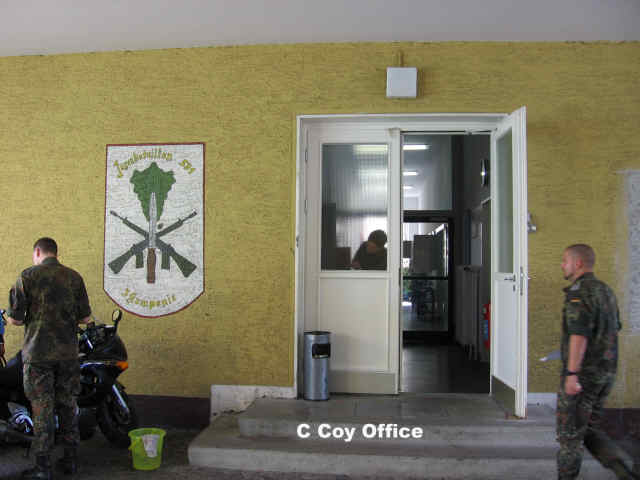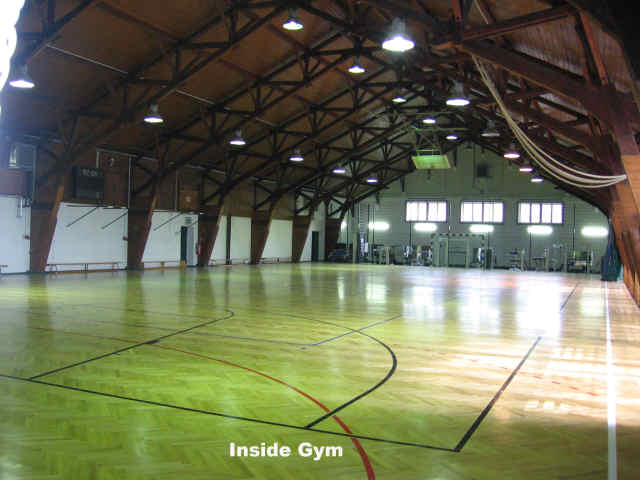Was named after Field Marshal Bernard Law Montgomery, 1st Viscount Montgomery of Alamein, KG. GCB. DSO. PC. and was situated on Sakrower Straße in Kladow a subdistrict of Spandau.
Built between 1935-39, these barracks served as a school for the signal wing of the Luftwaffe. On arrival of the Russians, the compound first fell into Soviet hands before being handed over to the British when Berlin was cut into four sectors. The Berlin Wall ran along the perimeter of the barracks with many a Russian OP set up to look in. In September 1993 the barracks were transferred over to German Hands with the Bundeswehr being given the keys on the 14th of that month. Renamed to Blücher Kaserne, it became the home of the 1st Jäger Regiment until it’s disbandment.
Updated 13 June 2024
Original name – Hottengrund Kaserne, Luftkriegsschule (Air Force Signal School)
Home to:
5th Regiment Royal Horse Artillery 1945 (1)
1st Battalion Royal Tank Regiment 1945-1946 (2)
3 (Independent) Company Royal Northumberland Fusiliers (Machine Gun) 1945 (3)
Life Guards Armoured Car Regiment RAC 1946 (4)
1st Battalion Grenadier Guards 1946 (5)
2nd Battalion Grenadier Guards 1946 (6)
1st Battalion Green Howards (Alexandra, Princess of Wales’s Own Yorkshire Regiment) 1946-1947 (7)
2nd Battalion Northamptonshire Regiment 1947-1948 (8)
1st Battalion Worcestershire Regiment 1948-1949 (9)
1st Battalion Gordon Highlanders 1949-1950 (10)
(1) arrived from Elmshorn south-east of Itzehoe 14 Jul 45 – moved to Olympic Stadium 30 Aug 45
(2) arrived from Mühlenbarbek north-east of Itzehoe 29 Aug 45 – less Battalion 5 Oct 45 – returns 15 Mar 46
(3) arrived from Karlshof Kaserne, Charlottenburg 22 Sep 45 – returned 7 Nov 45 – moved to Glückstadt west of Itzehoe 23 Mar 46
(4) arrived from Wolfenbüttel 16 Mar 46 – moved to Lüneburg less C Squadron 7 Jun 46
(5) arrived from Kiel 7 Jun 46 – moved to Neumünster 10 Oct 46
(6) arrived from Neumünster 6 Oct 46 – moved to Wuppertal 6 Dec 46
(7) arrived from Celle 6 Dec 46 – returned 24 May 47
(8) arrived from Göttingen 4 Jun 47 – returned to Germany – location unknown – 31 Jan 48
(9) arrived from Lüneburg 4 Feb 48 – moved to Gottingen May 49
(10) arrived from Essen May 49 – moved to Sennelager Apr 50
More to follow
Source: 21st Army Group later British Army of the Rhine to 1 Mar 49
Part II
replaced Sep 1950 – 1st Bn Black Watch (1)
replaced Nov 1951 – 1st Bn East Yorkshire Regt
replaced Jul 1953 – 1st Bn Royal Scots Fusiliers
replaced Mar 1954 – 1st Bn Grenadier Guards
replaced Mar 1955 – 1st Bn A & S Highlanders
replaced Jul 1956 – 1st Bn Royal Welch Fusiliers
replaced Feb 1958 – 1st Bn Royal Scots
replaced Feb 1960 – 1st Bn 2nd East Anglian Regt
replaced Jul 1961 – 1st Bn Durham LI
replaced Jun 1963 – 1st Bn POWY
replaced Apr 1965 – 1st Bn 1st Green Jackets [redesignated 1st Bn RGJ]
replaced Apr 1967 – 1st Bn KOYLI [redesignated 2nd Bn LI]
replaced Apr 1969 – 1st Bn A & S Highlanders
replaced Jul 1970 – 1st Queens Regt
replaced Jul 1972 – 1st Bn W&SFR
replaced Aug 1974 – 1st Bn Parachute Regt
replaced Aug 1976 – 1st Bn Green Howards
replaced Aug 1978 – 2nd Bn Royal Anglian Regt
replaced Jan 1981 – 1st Bn KORB Regt
replaced Mar 1983 – 3rd Bn Royal Regt of Fusiliers
replaced Mar 1985 – 1st Bn Royal Highland Fusiliers
replaced Mar 1987 – 1st Bn Black Watch
replaced Jul 1989 – 1st Bn Royal Welch Fusiliers [withdrawn Jul 1992]
(1) Information from the Archivist of The Black Watch gives the Regiment as being here in April 1950. Was this an Advance Party? They apparently returned to the Buxtehude area around October 1951.
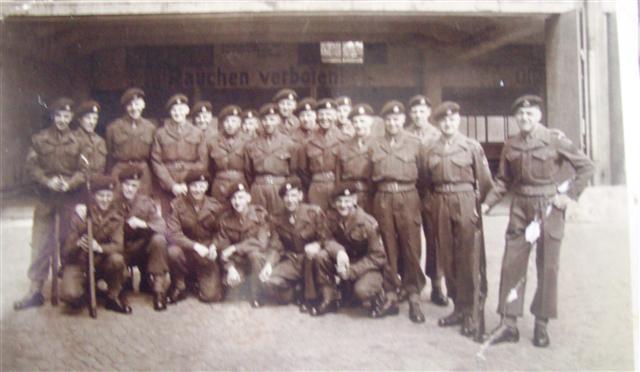
The soldiers of 9 Pl, C Coy of the 1st Bn East Yorkshire Regiment in front of a garage which was used for indoor weapon training, 1952
Courtesy of Private Don Bullock
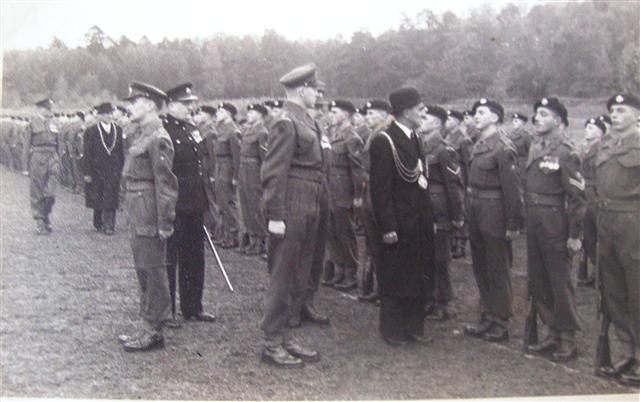
The presentation of the 1st Bn East Yorkshire Regiment in 1952 to the Ernst Reuter, the first governing mayor of Berlin
Courtesy of Private Don Bullock
The following photographs were taken by Mr David Fill in Montgomery Barracks, Berlin, on Wednesday 6th September 2006. They were obtained with the kind permission of the Kommandeurof Lazarett Regiment 31 (Field Ambulance), Brigadier A P Paine, Defence Attache British Embassy Berlin and WOII Andy Moss, British Embassy. Thank you also to Hauptmann Sengelaub and Oberleutnant Weseloh of the Bundeswehr for the guided tour of the barracks.
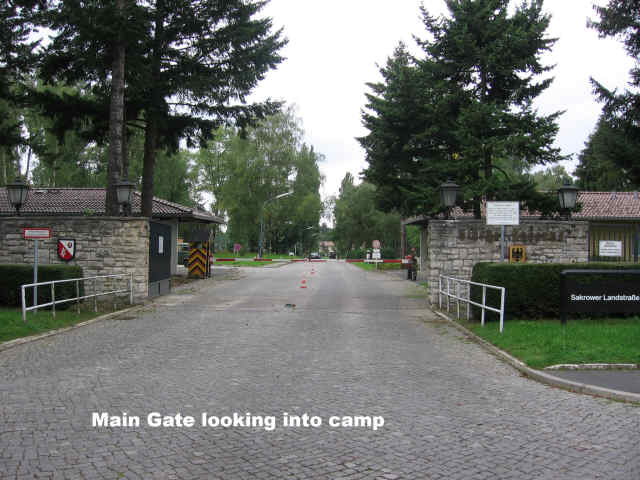
I was having my lunch on site (BP Oil Pipeline) in the Republic of Azerbaijan, when I suddenly thought about the memories of places I had lived during my life. One of them was Ludickeweg opposite Kladow British Army Barracks in Berlin around 1973. My father was attached to the 1st Queens Battalion. I went to school at RAF Gatow. As a teenager I would have great fun with my friends, exploring some of the buildings in the camp which were untouched since the war I think. I remember finding all sorts of discarded kit in the woods, and very close to the wire. We would even taunt with stones the guard dogs that which ran on parallel wire up and down a trench. I loved living there and thoroughly enjoyed the shore of the Havel and Berlin City Centre at the time.
Raymondo

Montgomery Barracks in Berlin also contained a primary school, which ran at right angles to the empty buildings which were half in the camp and half in the east. I remember the East German guards standing in the window apertures with their guns watching us kids in the playground. One kid in my class accidentally kicked a football over, before the fence went up. He was taken to the East German guardhouse and when his Father and the RMPs went to pick him up, the East German guards were feeding him chocolate! This then became a regular occurrence during the whole of our stay in Berlin!
Libby Harrison
